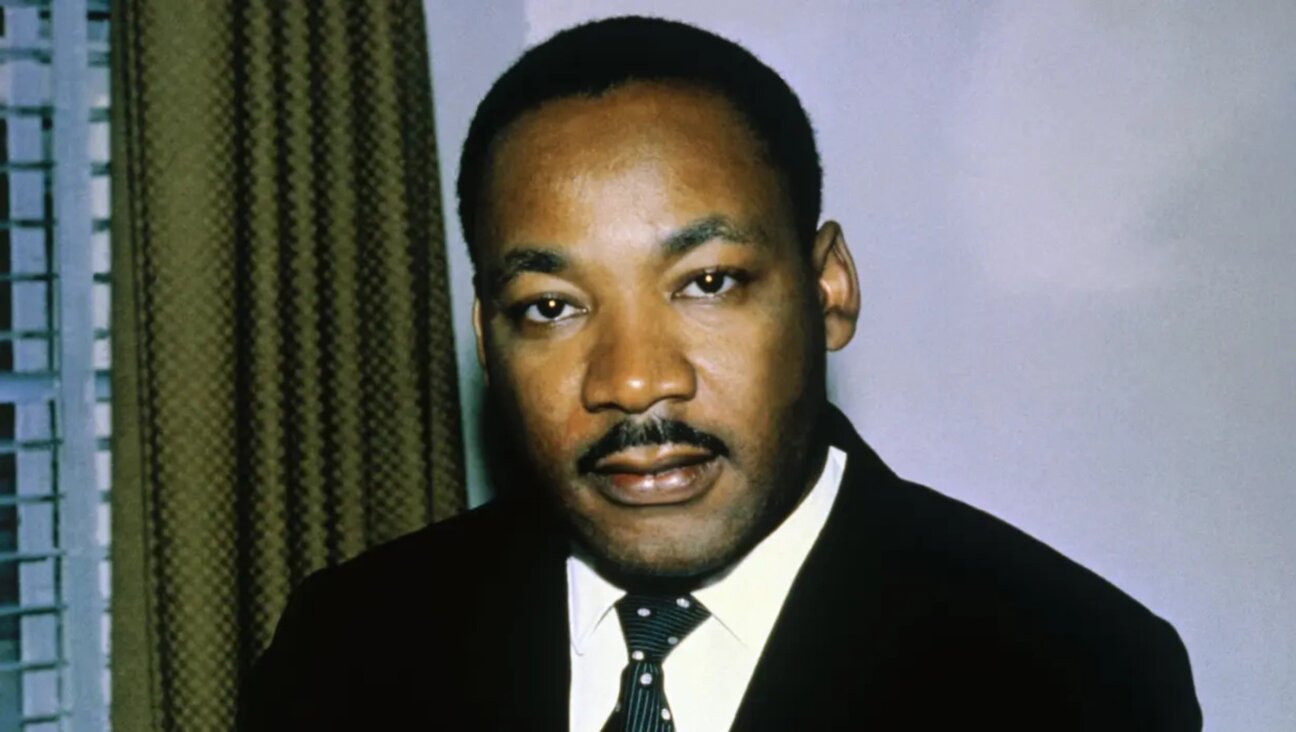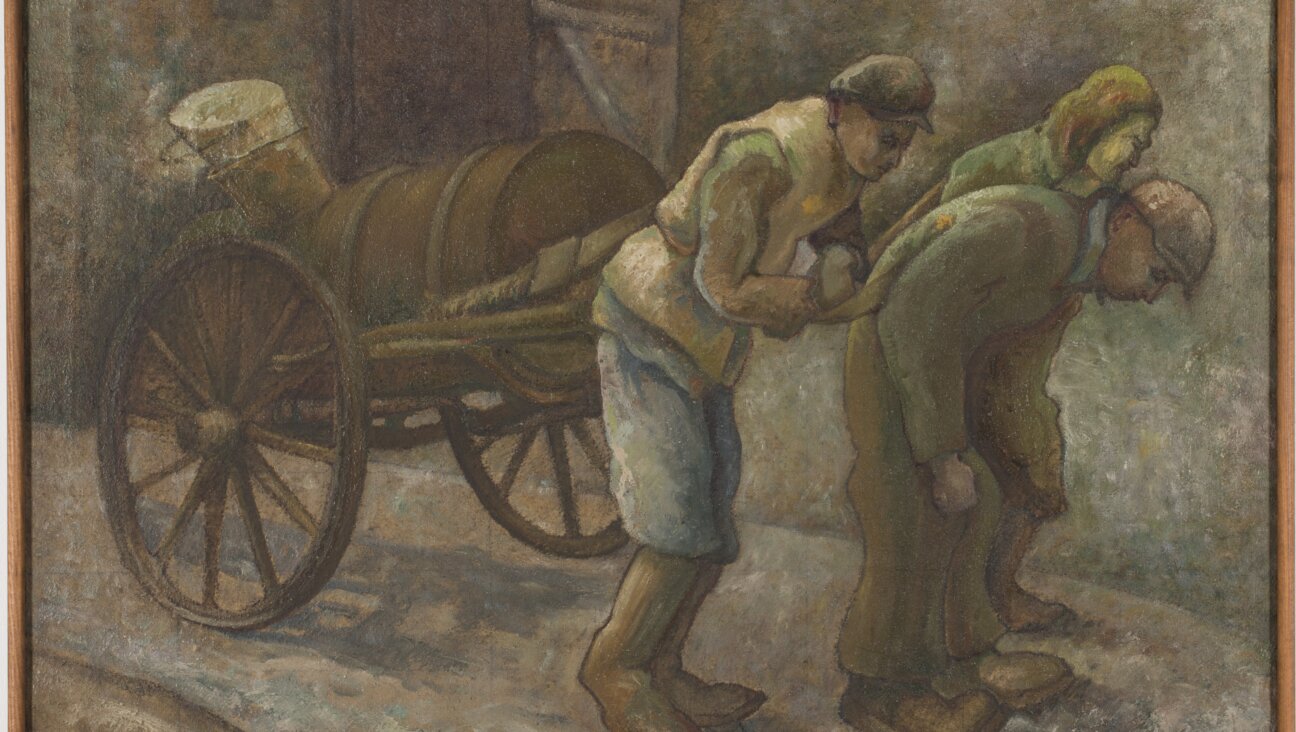This Australian Yiddish Big Band Will Blow Your Mind

YID! performing at the Shir Madness Music Festival in Sydney. Image by Larry Meltzer
This article originally appeared in the Yiddish Forverts.
It all started with a joke. Simon Starr, an Australian music producer, band director and bass guitarist, had been living in Israel for six years when he and his family had to return to Melbourne to be closer to aging relatives. Professionally speaking, the timing was not optimal.
Starr had been in high demand in Israel, and it wasn’t clear to him if he would enjoy the same success in Australia. Furthermore, much of the music Starr had been producing in Melbourne before leaving for Israel had been boring to him. Without any concrete plans, Starr wanted to try his hand at something totally different. But what?
His friend and frequent musical collaborator, the guitarist Willy Zygier, jokingly suggested that Starr assemble a Big Band to play Yiddish songs.
“It was just about the most impractical thing imaginable,” Starr said with a hearty laugh during an interview with the Forverts. “But I thought — it sure sounds like a lot of fun!”
Starr invited dozens of musicians — from jazz saxophonists, trumpeters, funk synth players and rock drummers to klezmer violinists and Yiddish singers — to a rehearsal at the Kadimah Jewish Cultural Center in Melbourne.
All together, 27 people came to the rehearsal. Among them were Willy Zygier and his three daughters, the singers Syd, Hettie and Alma. Also present was Husky Gawenda, an Australian folk rock singer whose voice is strongly reminiscent of Paul Simon’s. Gawenda, a native Yiddish-speaker from a Melbourne Bundist family, has been performing in Yiddish for several years with his sister Evie and cousin Gideon Preiss as the trio The Bashevis Singers. Preiss — who attended Starr’s initial rehearsal as well — and Gawenda also perform as the popular folk-rock duo “Husky.”

Husky Gawenda during a rehearsal. Image by YID!
Starr divided the 27 musicians into four independent mini-bands, which he calls “modules” that can be arranged in different combinations. The Yiddish singers — whose style can best be described as traditional Yiddish folk music meets Simon and Garfunkel and Crosby, Stills and Nash — make up the largest part of the group’s sound. The jazz horn section, which plays in an improvisational style reminiscent of Sonny Rollins and John Zorn, is a second key component. It is joined in turn by a psychedelic funk section, which sounds like the rebellious love child of George Clinton and synth-pop dance music.
Last but not least, Starr put together a fourth “module” that plays largely traditional klezmer music mixed with Yiddish theater numbers.
Perhaps unsurprisingly, that first rehearsal “was complete chaos,” Starr said. “But at the same time you could hear that the different elements were going to fall into place.”
Just how quickly they fell into place took everyone by surprise. The unusual musical mash-up proved so successful that it was only a matter of months before the group enjoyed international success.
The band, which soon adopted the name YID! and downsized to 22 members, was immediately invited to appear at Kadimah’s annual Jewish culture festival, where their performance left some audience members in tears.
“A couple of people told me that the torch had been passed on to a new generation through our music,” Starr said. “Honestly, I didn’t understand what the all the fuss was about. I’m not from that world. I grew up in a Zionist family, and Yiddish wasn’t part of my identity. So I didn’t really understand the emotional reactions.”
“Plus, the music itself was still pretty raw and we still had some kinks to work out.”

Simon Starr Image by YID!
Kinks or not, that first performance opened a lot of doors for the band. A video of it reached the organizers of the Adelaide edition of WOMAD, a renowned music festival that attracts over 100,000 attendees annually. Soon YID! was invited to perform at the festival. It was miserably hot, nearly 100 degrees. Starr, who plays barefoot, soon had to contend with blistered feet. The band’s instruments also suffered from the intense heat, having to be retuned several times during the set. Despite the conditions, YID! proved to be a big hit.
“Thousands of people were dancing to the music, and a lot of people told us how much they loved our sound,” Starr said. “It shows that YID! appeals to people from all backgrounds because the emotions in our music are universal.”
When Eric Stein, the artistic director of the Ashkenaz Festival in Toronto, heard that thousands of people at WOMAD had danced to the songs of Mordechai Gebirtig, Sholom Secunda and Itzik Manger, he immediately knew that he wanted to bring YID! to Canada. But he knew it wouldn’t be cheap to fly a band the size of a small orchestra halfway across the globe. Luckily, a philanthropist who attended YID!’s first appearance at the Kadimah Cultural Center offered to cover the band’s expenses so they could perform in Toronto.
There, at the Ashkenaz Festival, many in the audience of 5,000 were visibly moved.
“Generally speaking I think it’s rarer to hear Yiddish songs performed in Toronto than in Australia,” Starr said.
YID!’s characteristic fusion of different musical genres is readily apparent on their debut album “Space Klezmer.” In their playful version of the love song “Shvartse Karshelekh” (“Black Cherries”), for instance, the music quickly shifts from traditional Yiddish singing to psychedelic funk, followed by a short musical interlude into the Klezmer song “Khosn-Kale Mazl Tov” (“Mazel Tov Bride and Groom”) with flourishes of New Orleans jazz until the music eventually returns to where it began. The first and last moments of the song are soft and quiet, as if the music itself comes from somewhere far away. Gradually, the music grows more forceful until, like a bicycle going around a racetrack, it returns to its calm beginning.
The constant fluctuations in volume and musical styles and incorporation of several distinct generations of wedding music give the impression of listening to a story that skips across time and space. In essence, the unique version of “Shvartse Karshelekh” can be seen as musical commentary on how quickly Jewish life and culture have changed in the 20th and 21st centuries.
YID! will have many more opportunities to present their unique approach to Yiddish music that bridges the generations; Starr is currently organizing a North-American tour.
A message from our Publisher & CEO Rachel Fishman Feddersen

I hope you appreciated this article. Before you go, I’d like to ask you to please support the Forward’s award-winning, nonprofit journalism during this critical time.
At a time when other newsrooms are closing or cutting back, the Forward has removed its paywall and invested additional resources to report on the ground from Israel and around the U.S. on the impact of the war, rising antisemitism and polarized discourse.
Readers like you make it all possible. Support our work by becoming a Forward Member and connect with our journalism and your community.
— Rachel Fishman Feddersen, Publisher and CEO
























